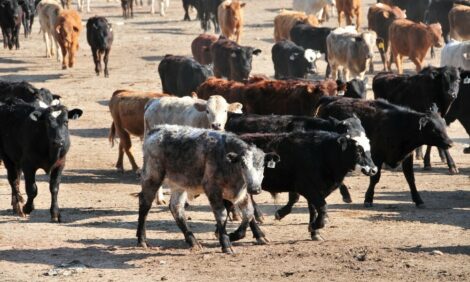



Identification and Traceability is Key in Canada
CANADA - Having a traceability system in place is important in keeping Alberta's livestock industries moving in the event of an emergency.Specifically, establishing a traceability system is required to prevent, prepare, respond to or recover from an emergency or foreign animal disease outbreak, says Agriculture and Rural Development for Alberta.
"There are three key pillars to traceability: premises identification, animal identification and movement," says Brent McEwan, executive director of traceability, Alberta Agriculture and Rural Development. "Alberta's livestock industry and the cattle and hog industries in particular, have already dealt with animal identification and segments of premises identification. Work has already begun with industry on animal movement."
Premises identification, knowing where animals are bred, kept, raised, displayed or assembled in the province, is essential to adequately address a disease management situation, contain the disease, deal with it and keep commerce moving. Premises identification became a mandatory requirement to access the Alberta Farm Recovery Plan II (AFRP II) payment. As of January 1, 2009, when the Animal Health Act came into effect, premises identification became mandatory under the legislation. The Alberta government does realize that there will be an adjustment period and time is needed to communicate these regulatory requirements and provide application forms to the industry.
"There is a misconception that the Animal Health Act applies only to cattle. It actually covers all livestock and poultry species in the province," says McEwan. "The Act does not apply to household pets, such as dogs and cats, but it does include recreational horses for example."
Two groups of individuals will need to apply for a premises identification number - animal owners and the owners of commingling sites. New application forms are being developed and will go out to animal owners who are not registered under AFRP II, and to owners of commingling sites. Animal owners who already registered for AFRP II do not have to re-apply for a premises identification number again.
"A commingling site is a location where recordable animals (cattle, horses, sheep, goats, bison, etc.) owned by different owners are held together," says McEwan. "These can be boarding stables, community pastures, race tracks, feedlots, veterinary clinics, fairs and exhibitions. The animal owners will need to apply for a premises identification number and owners of commingling sites will need to apply also. If you are an animal owner with all of your animals located at a commingling site, the commingling site number will be assigned to you. For example, if you are an acreage owner with a horse at a boarding stable, you will be assigned the premises identification number of the boarding stable. This will make it possible, in the case of a disease outbreak, to keep track of where animals are located."
An application form is currently being worked on and will be sent out to animal owners upon completion. Also, there is a premises identification page on Alberta Agriculture and Rural Development's website, and animal owners can use this very simple registration site to register online.
"Premises identification consists of five pieces of information," says McEwan. "The name and number of the applicant, legal land description, types of species on the operation, the type of operation, and the capacity of the operation or the maximum number of animals that could be on a premises."
TheCattleSite News Desk


